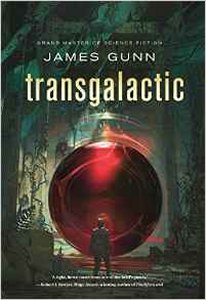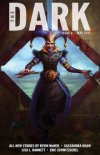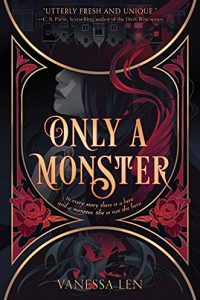Russell Letson reviews James Gunn
Transgalactic, by James Gunn (Tor 978-0765380920, $26.99, 224pp, hardcover March 2016
 Two books that rose to the top of the stack on the dresser once again have me considering recent online discussions of the relevance of old or old-fashioned SF, of the value of historical perspective in reading a popular genre, of the appeal of deliberately retrospective stories, of the retreading of venerable tropes, and of whether some flavors of SF represent mere nostalgia. On one hand, SF traditionally sees itself as celebrating New Things so new that they haven’t even happened yet. On the other hand, there are the alternate history and steampunk subgenres (the latter of which quite deliberately adapts SF motifs and grafts them onto historical settings), so there is clearly an audience for retro-flavored entertainments.
Two books that rose to the top of the stack on the dresser once again have me considering recent online discussions of the relevance of old or old-fashioned SF, of the value of historical perspective in reading a popular genre, of the appeal of deliberately retrospective stories, of the retreading of venerable tropes, and of whether some flavors of SF represent mere nostalgia. On one hand, SF traditionally sees itself as celebrating New Things so new that they haven’t even happened yet. On the other hand, there are the alternate history and steampunk subgenres (the latter of which quite deliberately adapts SF motifs and grafts them onto historical settings), so there is clearly an audience for retro-flavored entertainments.
And in any case, SF has worked and reworked its core materials since before the genre even had a name. With space opera, work by, say, Neal Asher, Iain M. Banks, Nancy Kress, Linda Nagata, or Walter Jon Williams is part of a tradition that goes back to E.E. ‘‘Doc’’ Smith and extends through Edmond Hamilton, Jack Williamson, Poul Anderson, and Jack Vance. Its story-space is a galaxy populated by exotic alien species, containing one or more star-spanning polities, possibly with a dizzyingly deep history. It is a setting made for explorations, intrigues, alien encounters, and wars – arguably a futureward projection of the condition of an Earth that still had blank spaces on the map, unknown peoples and societies, and tramp steamers to visit them.
This brings me to Transgalactic, the sequel to James Gunn’s Transcendental (reviewed in December 2013), which maintains its predecessor’s backward looks at earlier genre motifs and atmospherics. Transcendental echoes Olaf Stapledon in its embedded pilgrim-tales of alien evolutionary paths and ends with scenery and action right out of the SF-pulp version of lost-city adventures. Transgalactic continues that latter line, interleaving images and gestures from earlier cycles of science-fictional storytelling with more contemporary devices and shaping the whole concoction into an old-fashioned interstellar odyssey.
The Transcendental Machine that serves as the McGuffin of the first book has proved to be part of a transportation network scattered across the galaxy, a system of such great antiquity that its gateways have been incorporated into later structures, which are themselves sometimes ancient ruins. Two of the first book’s surviving characters, former soldier Riley and the mysterious woman Asha, are teleported by a Transcendental Machine to separate random destinations far across the galaxy from each other. Riley finds himself at the center of an abandoned pyramid that has been built around a Machine, while Asha is sent to a world close to the crowded galactic center, where she is honored by the population as the Chosen One, which might mean either goddess or sacrifice. Each needs to get off-planet and somehow find the other in order to bring the news about the nature of the Machines to the Galactic Federation that governs our spiral arm.
Alternate chapters follow their attempts to deal with the local inhabitants and find a way back to Federation space. Each also gains an alien companion. Riley’s is a dinosaurian predator (‘‘Rory,’’ for his roaring vocalizations) whose forebears built the pyramid before slipping back into a pre-technological level, while Asha negotiates a complicated dance with her hosts (‘‘Squeals,’’ for the way their language sounds to her) and a Federation representative charged with overseeing this world’s possible admission to that polity. Once back in Federation space, Riley and Asha’s separate travels provide views into that organization’s operations, the aftermath of the Federation-human war, and the role of the artificial intelligences – the pedias – that provide more than just logistical support for starfaring civilizations.
Images and scenes evocative of the pulps continue to run through the narrative. In addition to the ancient-ruins and devolved-species motifs that carry over from the previous book, there is the administrative planet Federation Central, with its ‘‘few open areas breaking the flat roof that covered almost everything’’ (echoes of Trantor in the Foundation series). Asha suspects that the Federation is less a grand, benign font of galactic wisdom than a ‘‘tangled web of bureaucratic bungles, dead ends, and corruption.’’ And when she gets back to Earth, she finds a planetary-Pedia-run material utopia (echoes of Jack Williamson’s The Humanoids) with a secret underground of dissenters who hope to bring down the machine and restore fallible human freedom (and there’s a secret underneath that one). Riley’s path takes him to a classic thieves’-den planet; a multi-level Dantean pleasure/hospital/rehabilitation-ward world to deal with some personal unfinished business; and the secret laboratory of a not-entirely-mad scientist whose reaction to Riley’s tale is, ‘‘That sounds like some ancient space romance…. Full of incredible adventures and near-death escapes.’’ The book’s kicker (and promise of a third volume) is an epilogue that I will almost spoil by revealing that as soon as I read it I thought of the 1955 Williamson & Gunn space opera Star Bridge.
One of the more old-fashioned traits of this kind of large-scale story-space is the elevation of issues and conflicts toward abstraction – not quite allegory, but something like the classic Western’s near-ritual casting and action. Most of the aliens in both novels are less individuals than exemplars of alien psychologies shaped by evolutionary forces. (Though Asha’s Squeal companion gains some individuality once he gets some lines.) Nor are Asha and Riley that strongly individuated – they are also types, defined by the familial and personal traumas visited upon them by the war with the Federation. Even though passage through the perfecting filter of the Machine improves their physiological and mental processes, their emotional lives remain conventionalized, and there is a sense of distance even when we share their thoughts.
This is not character-driven fiction, but a deliberate revisiting of some of the genre’s most enduring features across a century or more: the cosmic-history vistas of Wells and Stapledon (and the non-fiction speculations of J. B. S. Haldane or J. D. Bernal); the far-future strangeness of ‘‘Don A. Stuart’’ (John W. Campbell in his quieter mode) or very early Arthur C. Clarke; the hairbreadth heroics of all those gaudy-covered pulps. I’m not sure that this kind of literary-historical backward glance is going to appeal to readers whose history does not extend to those stories – I see too many on-line critical characterizations of even 1960s SF as past-it to think otherwise – but I think there’s plenty of life in the old stuff yet.







Typo: “Don R. Stuart” s/b “Don A. Stuart.”
” I see too many on-line critical characterizations of even 1960s SF as past-it to think otherwise –”
If this is true, then it behooves a different set of critics to teach newcomers (at least those newcomers who intend to take the field seriously, either as writers, editors, reviewers/critics, academic types, or even serious readers) the history of the field from a more rounded perspective.
Dave–That’s not a typo but a plain old mistake on my part. I should have caught it myself when proofing, but I plead brain-glitch, or perhaps leakage from the “David R. Bunch” mental file.
I’m not sure what’s to be done about a readership that reads for pleasure rather than to build a scholarly-historical understanding of SF–nor am I sure that it’s realistic to expect the ordinary reader/fan to undertake such a project. There will always be an audience segment that finds literary or genre history interesting, but how many filmgoers feel the need to view the work of, say, Eisenstein or Dreyer in order to enjoy even the most serious contemporary film? The development of historical perspective is a minority pleasure. (And I confess that a little Dreyer goes a long way, even for this film enthusiast.)